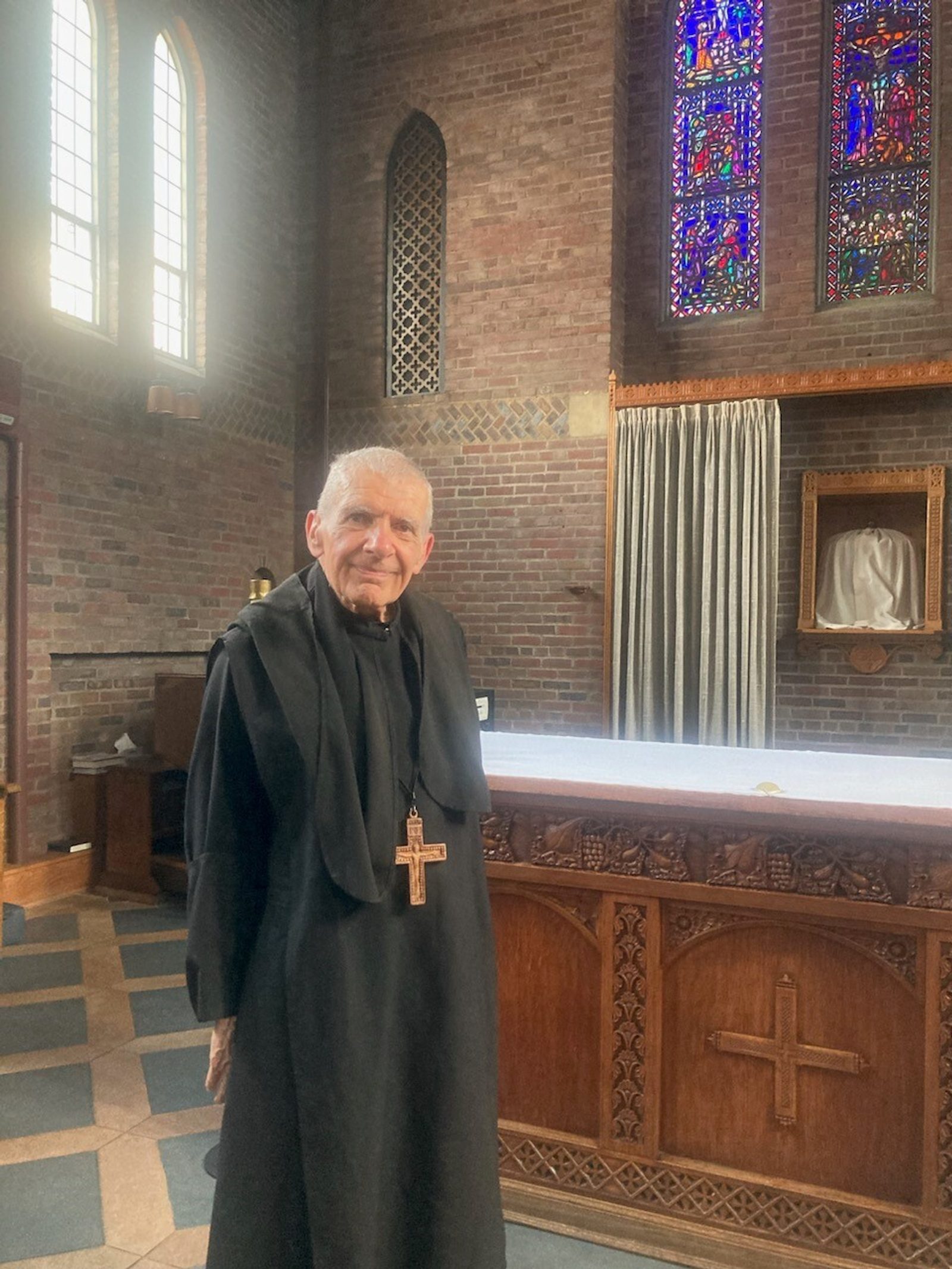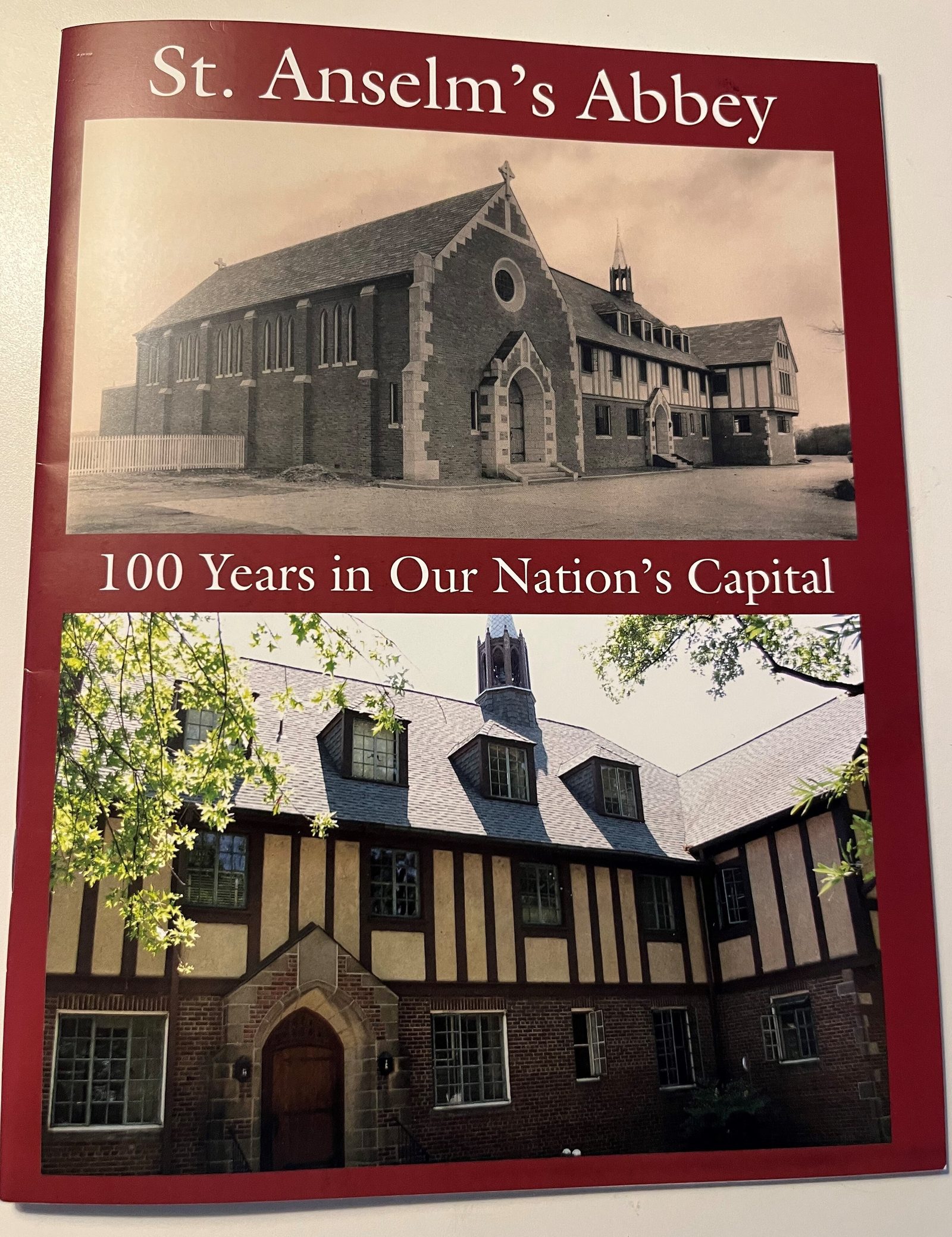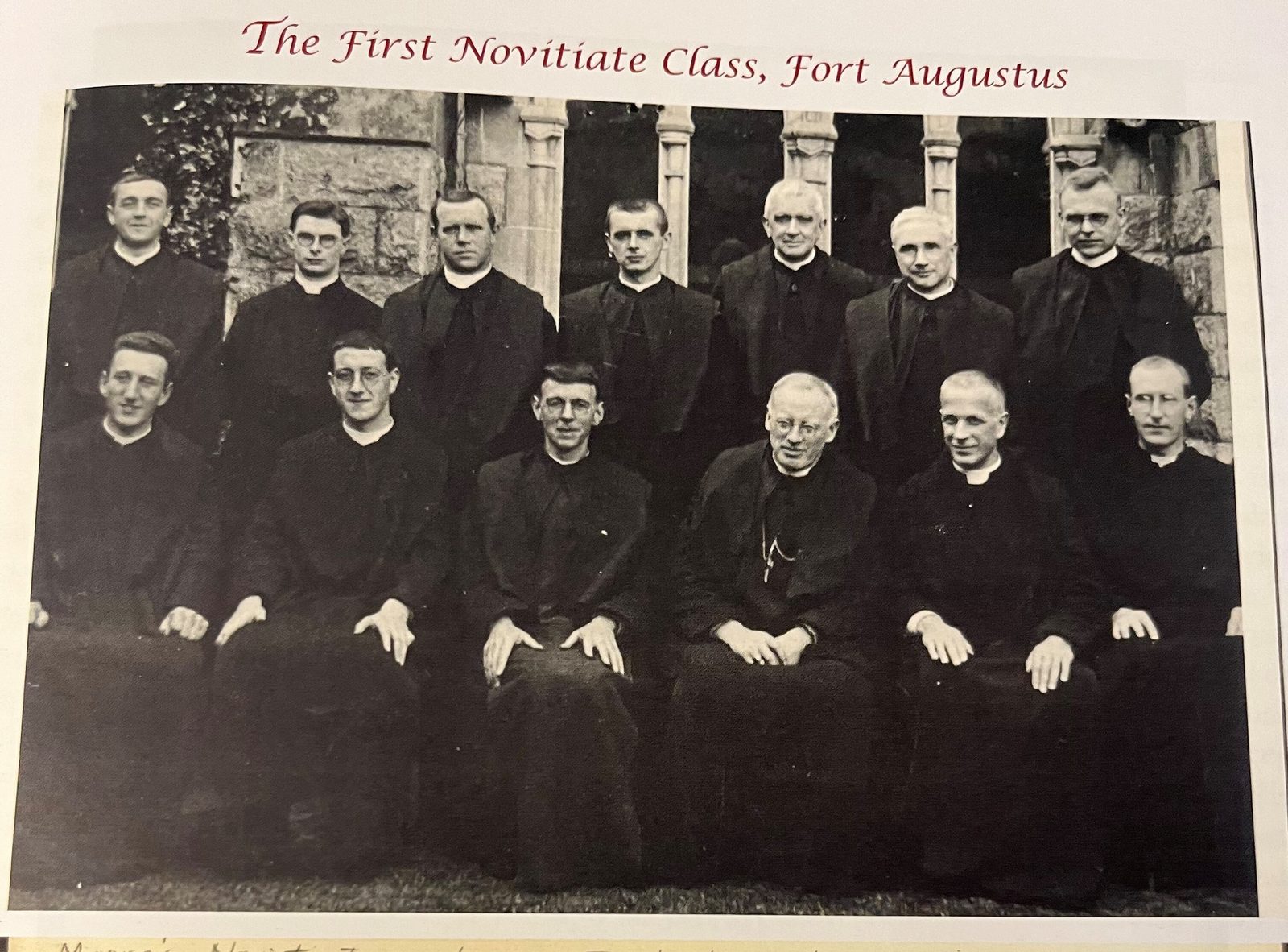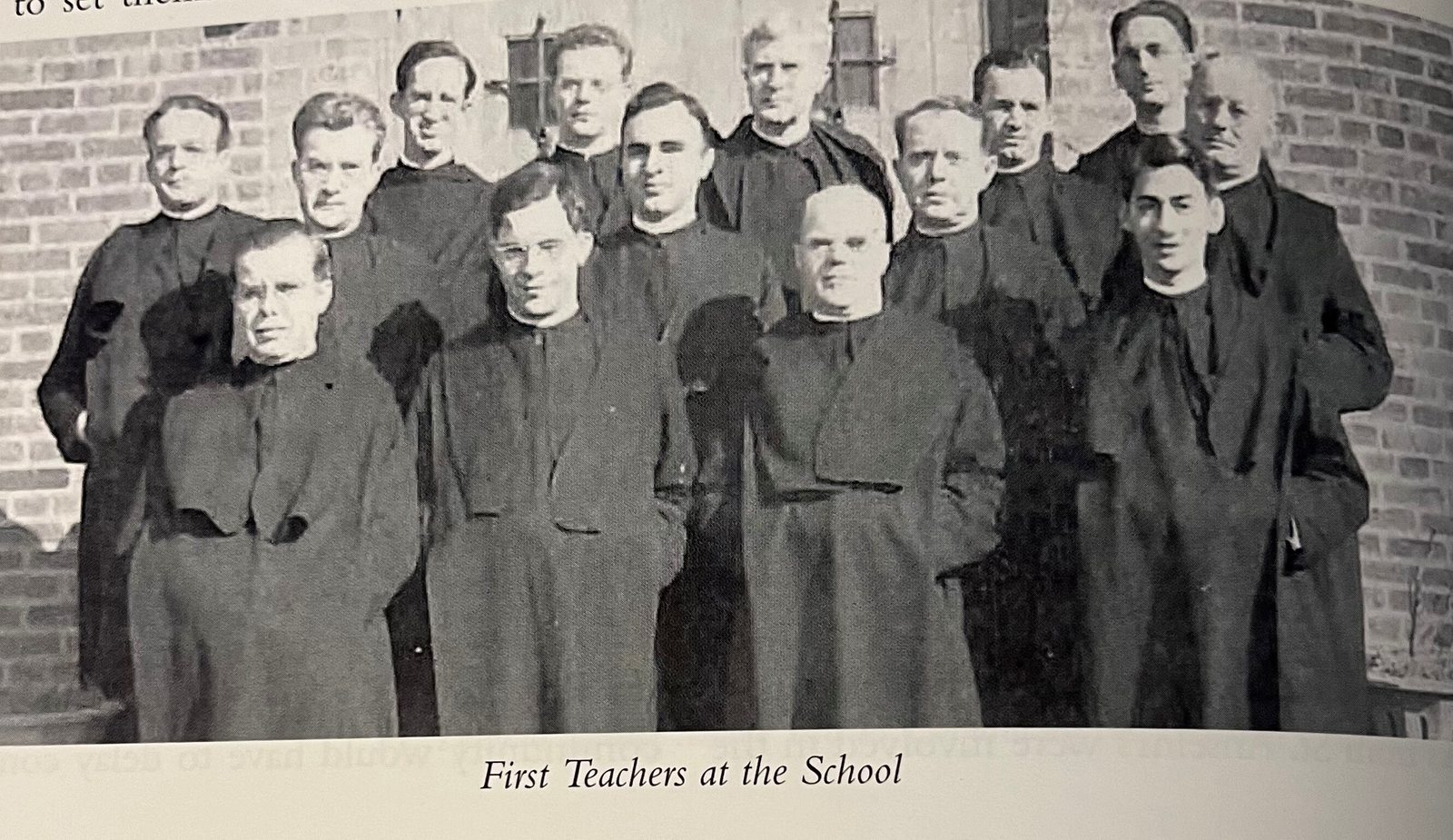St. Anselm’s Abbey in Northeast Washington marked its 100th anniversary Sept. 15 with a Mass and reception recognizing the Benedictine abbey’s unusual origin story and its particular niche in Washington Catholic history.
In 1923, Paulist Father Thomas Verner Moore and four friends, most also priests affiliated with The Catholic University of America, went to Scotland to join the formation program at the Benedictine Abbey at Fort Augustus. The group was comprised of one layman and priests of different dioceses and religious orders. They coalesced around interest in establishing a Benedictine monastic community dedicated to scholarship and prayer, what today might be described as a think tank studying faith and science.
In an interview with the Catholic Standard, Abbot James Wiseman explained that the process for creating a Benedictine community requires sponsorship by another abbey. As he sought to establish a priory in Washington, Father Moore had pursued the support of various English Benedictine abbeys, based upon his positive experience as a World War II chaplain who recuperated from an illness at Downside Abbey in England. Once permission to seek a Benedictine foundation was given by Baltimore Archbishop Michael J. Curley, the group went to Fort Augustus Abbey in Scotland for formation as Benedictine novices. (The Baltimore Archdiocese at the time encompassed what is now The Roman Catholic Archdiocese of Washington.)
Four of the men completed the novitiate at the Scottish abbey in the summer of 1924. Along with several Scottish novices and monks, and Abbot Joseph McDonald from Fort Augustus who came to assist for a few months, the Americans returned to Washington and set about establishing a Benedictine community on a piece of farmland in the Brookland neighborhood. Their home, described variously as a farmhouse and a converted sausage factory, launched St. Anselm’s on Sept 15, 1924, with the Liturgy of the Hours.

In his homily at the 2024 celebration of that inaugural liturgy, Abbot Wiseman related some details about the abbey’s founder and how Father Moore’s vision for St. Anselm’s has carried through the century. “What he sought will ideally have marked the lives of all the monks of this community over this past century,” he said. Relating Father Moore’s recollection of a dream that led to his turn toward Benedictine life, Abbot Wiseman said his predecessor’s words show “that a decision to enter a particular form of religious life is not simply, or even primarily, a matter of rational decision-making, the weighing of pros and cons and so forth. It’s a matter of the heart, of what you feel drawn to without necessarily being able to explain your decision in an intellectual way.”
Abbot Wiseman went on to describe some of the early challenges the Benedictines faced, notably financing the community’s existence. In 1930, the first monastic residence and church, known as the Tudor building, opened at the location on South Dakota Avenue.
Abbot Wiseman noted that since its early days, St. Anselm’s has relied on outside supporters. In those first years, the salaries earned by some monks as teachers at Catholic University, for example, proved inadequate to sustain the priory and construction expenses. Early on that consisted significantly of stipends for Masses and meals provided by the Sisters of Notre Dame de Namur from nearby Trinity College, now Trinity Washington University.
However, from the very beginning, St. Anselm’s superior at Fort Augustus reportedly felt that opening a school was key to financial stability and “satisfying work for newer members of the community,” Abbot Wiseman said.
A north wing was added to the Tudor building in 1940, intended as a residence for the novitiate. Its two lower floors soon housed St. Anselm’s School, while the novices were moved to the attic. St. Anselm’s was not designated as an abbey until 1961. Before that it was a priory. St. Anselm’s Abbey School – first known as the Priory School – opened in 1942 and soon became one of the best in Washington, notes a commemorative booklet summarizing the abbey’s history. A school building, athletic fields, and another monastery wing followed in the next decades, and plans for another expansion are in the works. It continues to have a shining reputation.
In addition to history, the booklet includes a discussion of Benedictine community life and some anecdotes, also included a necrology of the 38 monks who have served there. Benedictine monks remain attached to just one abbey through their lives, unlike members of other religious orders, who may move around within their province or the world, Abbot Wiseman explained to the Standard.
The anniversary liturgy was joined by the abbey’s 11 current monks, as well as students and alumni of St. Anselm’s Abbey School, their families and others with a connection to the abbey. That included oblates (affiliated non-monks), neighbors and those who join the monks for prayer or liturgies.
In concluding his homily, Abbot Wiseman observed that although much about the world has changed in those 100 years, “the overall life and work of the monks was then set and has remained essentially the same.” He said that the work of St. Anselm’s continues to thrive under Father Moore’s motto, based on a verse from St. Paul’s letter to the Philippians. “You can do all things in him who strengthens you.”



St. Anselm’s Abbey today
A commemorative booklet highlighting the 100th anniversary of St. Anselm’s Abbey in Washington, D.C., also lists the 11 current Benedictines serving at the monastery and at St. Anselm’s Abbey School. They are:
- Abbot James Wiseman, who in addition to serving as the Benedictine community’s abbot, also offers vocations direction there and teaches religion. He is from Louisville, Kentucky, and professed his vows in 1966.
- Benedictine Father Philip Simo serves as the prior at the abbey. A Brooklyn native, his profession date was in 1983.
- Benedictine Father Joseph Jensen, an Old Testament scholar, is a Chicago native and professed in 1948.
- Benedictine Father Michael Hall, the headmaster emeritus of St. Anselm’s Abbey School, is a native of Washington, D.C., and professed in 1959.
- Benedictine Father Peter Weigand, the president emeritus of the abbey, teaches earth science and anthropology. A native of Chippewa Falls, Wisconsin, he professed in 1966.
- Benedictine Brother Dunstan Robidoux, a guest master, sacristan and almoner for the abbey, is from Fredericton, New Brunswick, Canada, and professed in 1988.
- Benedictine Father Gabriel Myers, a bursar and choir master at the abbey, is from Perkasie, Pennsylvania, and professed in 1988.
- Benedictine Father Samuel Springuel, who serves as a novice master, junior master chaplain and robotics and computer science teacher, is from Glen Echo, Maryland, and professed in 2013.
- Benedictine Father Ignacio Gonzalez, who serves as the director of campus ministry, director of Oblates, and teaches Spanish and religion, is from Austin, Texas, and professed in 2014.
- Benedictine Brother Cyprian Morales, who serves as an assistant sacristan and is a junior monk, is from Aurora, Illinois, and professed in 2023.
- Benedictine Brother Maximilian Castonguay, a novice at the abbey, is from Richboro, Pennsylvania, and his investiture was on Feb. 29, 2024.








